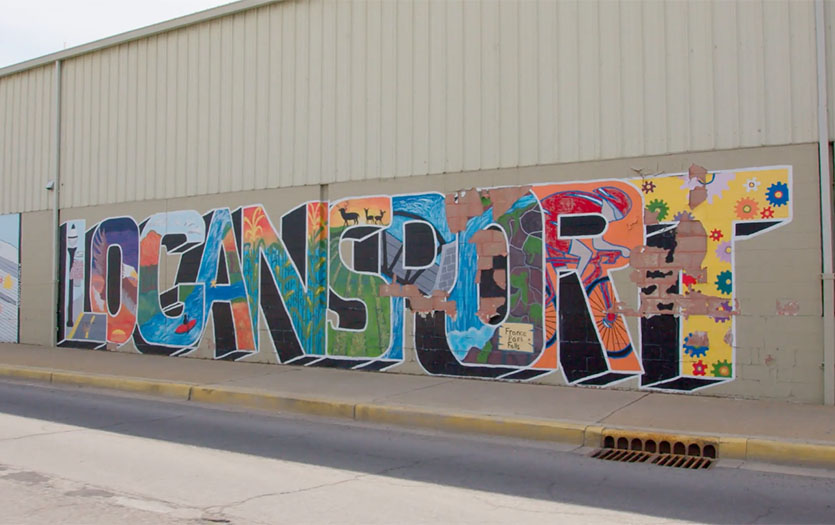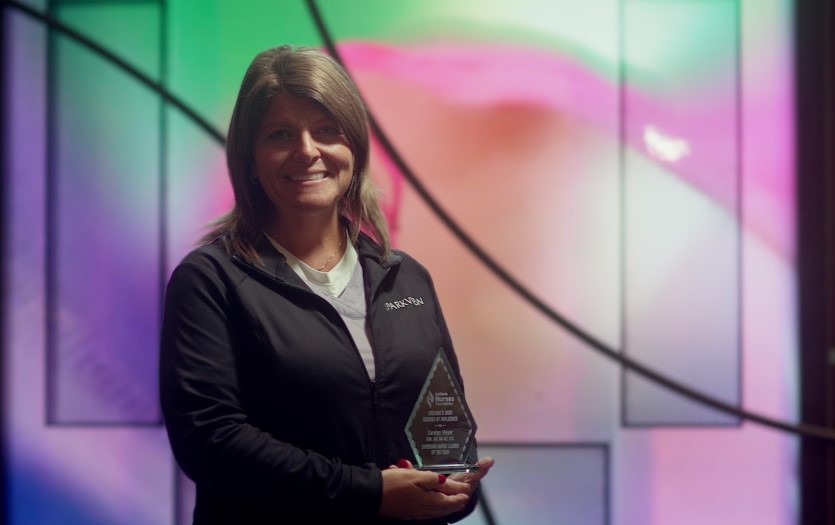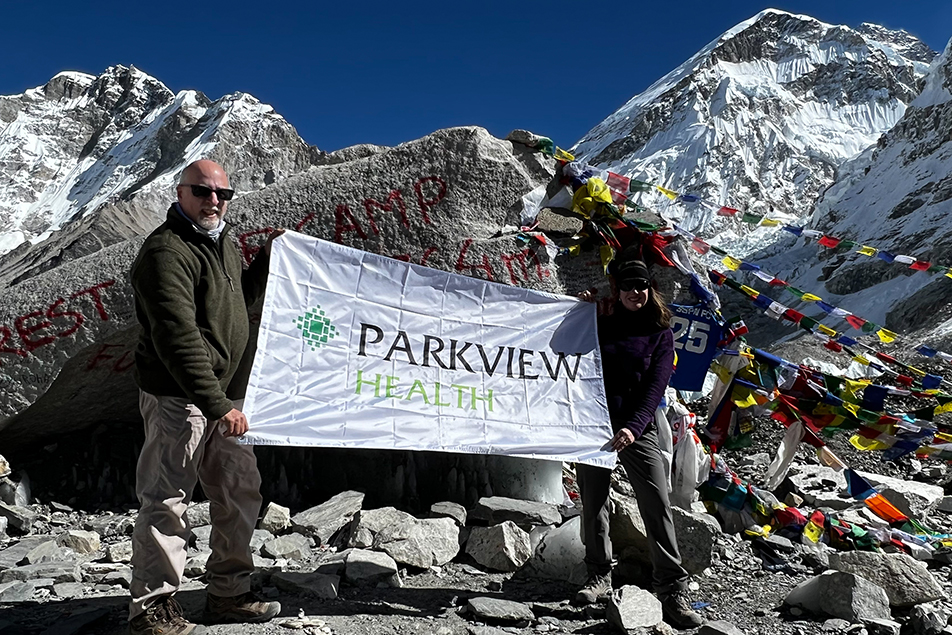
Mary Wagmeister, NP, PPG –?Cardiology, and her husband, Alan, can now say they’ve seen the view from The Mount Everest Base Camp, at an impressive 17,598 feet.
Alan, a communications specialist for Hearing the Call, an organization dedicated to treating hearing loss in underserved populations across the world, often travels in his role. “Part of what our organization does is humanitarian work, hearing outreach,” Alan said. “I met a gentleman in Scotland who also does nonprofit work, and he runs these fundraising trips to Mount Everest. He’s trying to build a medical clinic, which aligns with our goal of running a hearing clinic in the area. Mary and I decided to go explore how we would get everything to the clinic, and then, after, we’d make the climb to Mount Everest Base Camp.”
Once it was decided they would be making the trek, the couple started preparing physically. “We'd been working out,” Mary said. “We go to a local fitness center, but I worked with a trainer for the 8 to 9 months leading up to the trip, 3 to 4 times a week. I’d never really done strength training, so that was important for my legs and arms. I also did balance training because I'm fairly clumsy.”
In Alan’s case, the journey to better health had been several years in the making. “About three years ago, I had some heart health concerns, liver problems and high cholesterol,” Alan recalled. “I started working with Jessica Barkdull, NP, PPG – Cardiology and Lisa Falotico, DO, PPG – Family Medicine. They understood who I am, and we worked on a plan to get me back in shape and manage my lifestyle through diet and exercise. It's been a journey. I’d done some 5ks but nothing like climbing to Base Camp.”
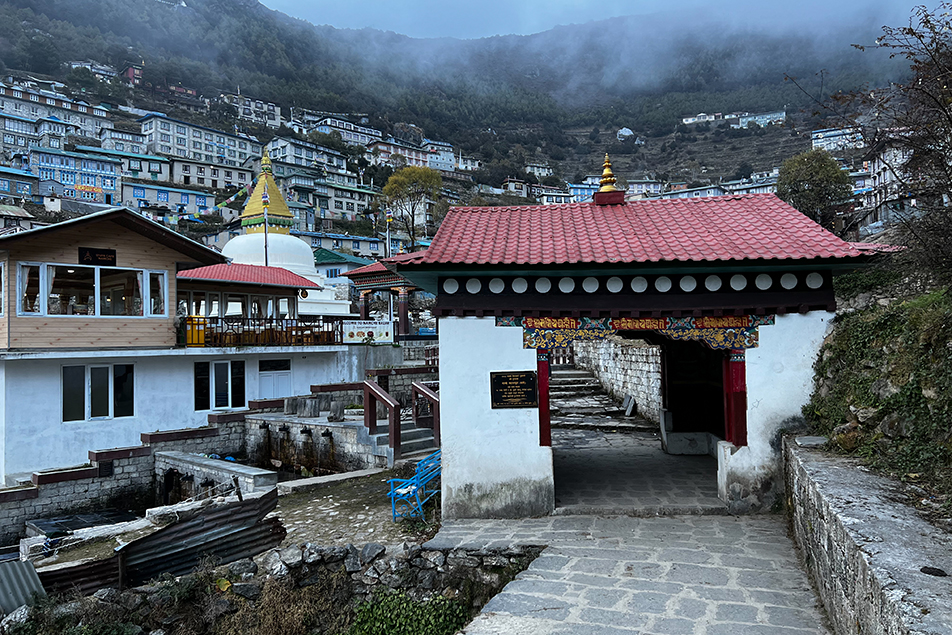
Meeting the villagers
Before departing for the actual climb, the couple spent some time in the Thame Valley, and were blown away by the people of the village.
“One night, the women of the village came to meet with us and gave each of us a special blessing and prayer shawl,” Mary shared. “My birthday was the day before and they brought in a big cake to celebrate. They lit a candle as part of the blessing and threw rice at me. We cut the cake for 50 people, and no one took a bite until I did. Then, the villagers came up and gave me a prayer shawl and a blessing. By the end, I had 30 shawls around my neck!”
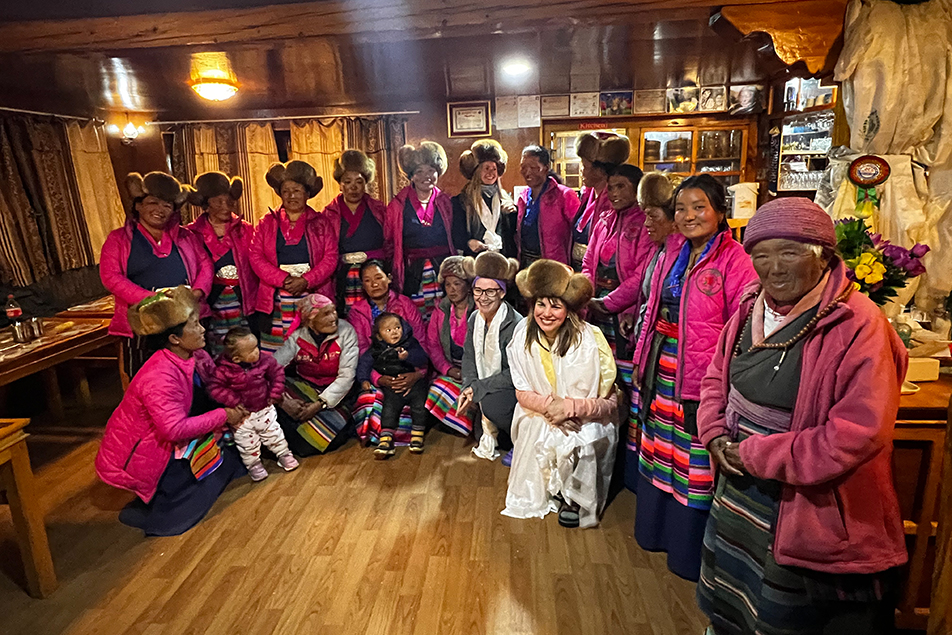
The interaction proved that the area was open to audiology services as well. “That evening we told them we'd have a clinic the next day so we could look in their ears and 37 people showed up to get their hearing checked. It was amazing.”
The climb to Base Camp
The couple and their fellow travelers took a helicopter to the bottom level of Mount Everest and then started the 10-day journey to Base Camp.
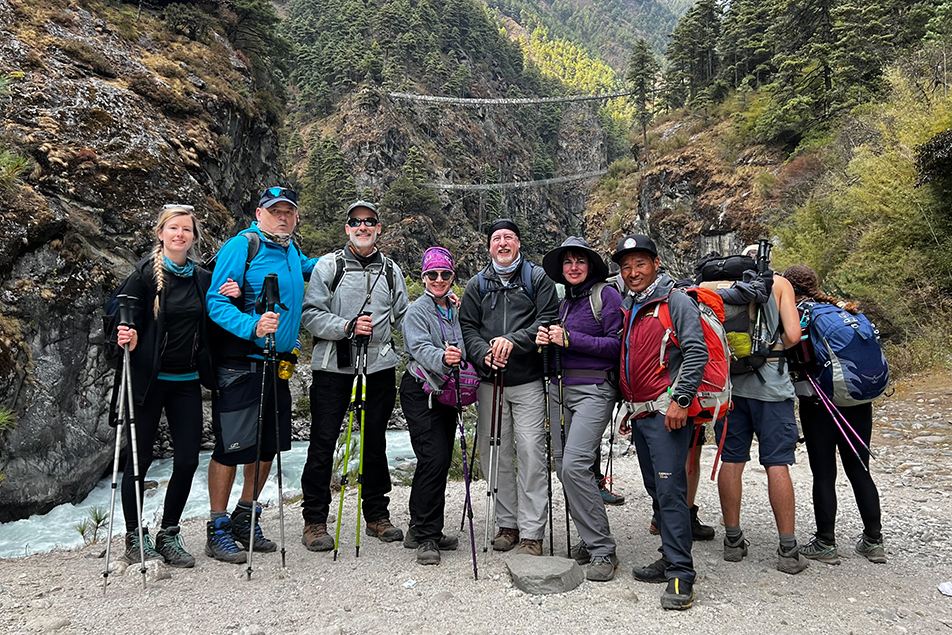
“One important thing is to know that there were built-in acclimatation days,” Alan said. “We had to spend at least three nights at 11 thousand feet and two days at 15 thousand feet before you could go higher.”
These days weren’t lazy days, however. “We would still have to hike and do some things on acclimation days,” Mary added. “We would go on short hikes with slight elevation gains, and then come back down to where we were camping for the day.”
The higher the group went, the more it impacted the hikers. “We were told, you can't train for altitude, and that's true. You just have to acclimate when you're there.”
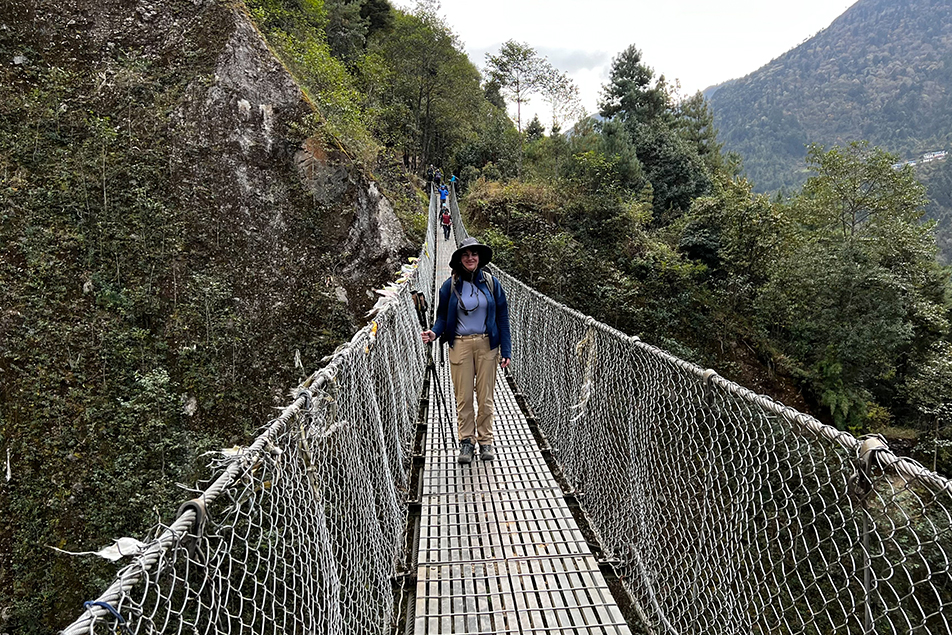
“I didn't notice the altitude right away,” Mary said. “I made it to 14 thousand feet before it started bugging me. I got a wicked headache, but I took some altitude sickness medication and that was helpful.”
The response was similar for Alan. “Once we were above 14 thousand feet, you could really feel a difference just doing basic tasks. I was out of breath just getting things out of my bag or making the bed.”
By the time they were closing in on Base Camp, the effects were hard to ignore. “I had the slowest pace toward the end,” Mary said. “Especially going up steep hills. I just couldn’t breathe. Plus, it was so cold at the end that, as we closed in on Base Camp, our water was freezing. We were comfortable in our sleeping bags and always had a thick blanket to stay warm at camp, but as soon as you got out in the morning it was brutal.”
Reaching the top
On November 15, the couple made it to Base Camp. “It was very spiritual,” Mary said. “You just look out and it’s hard to believe the beauty.”
Alan agreed. “In a way, you're almost in awe. You look up and you're in the middle of this valley with mountains all around you. You can't see the top of Mount Everest from Base Camp because of big glacier "ice falls," but you see some of the other peaks and the sky is so blue. It's hard to describe. Just being there in that moment and thinking, ‘We're at 17,600 feet. We made it. How did we get here?’”
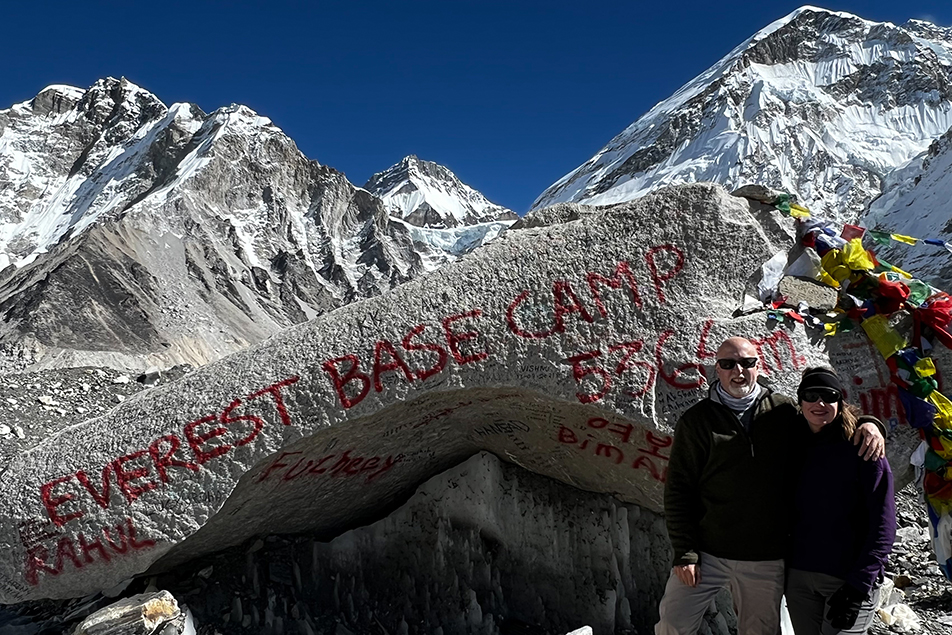
Mary and Alan marked the monumental achievement with a sweet nod to those who’d climbed before them. “It’s a Mount Everest thing to have a special treat when you hit Base Camp. I love the DeBrand’s peanut butter cups. We saw them at the airport, and that was it! We carried them all the way to the top.”
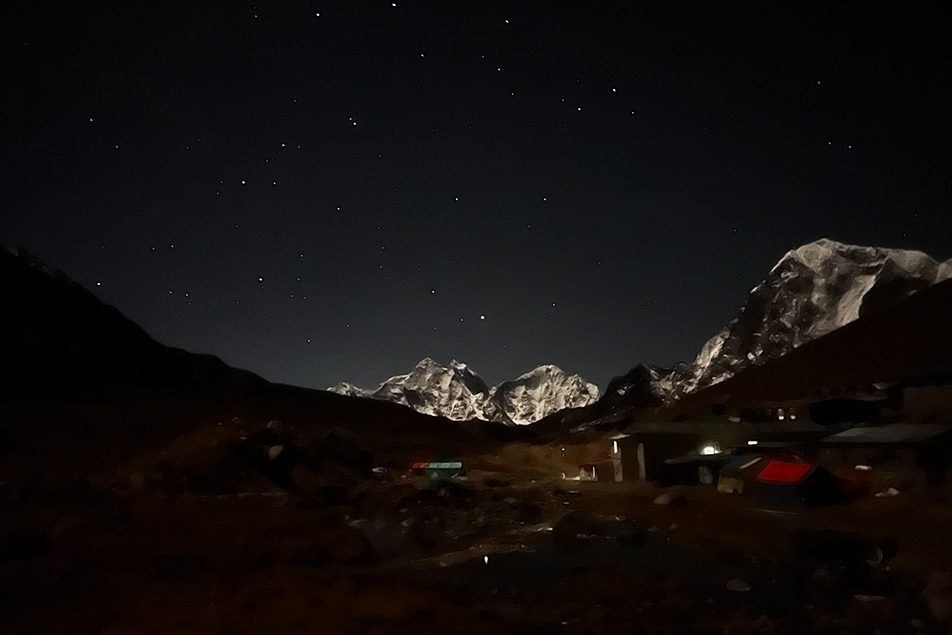
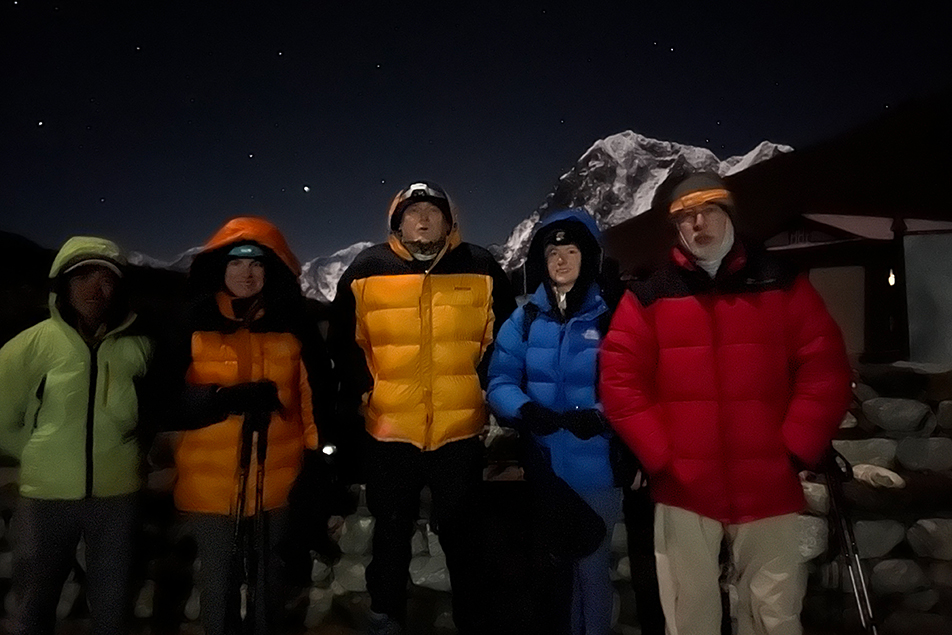
They took a helicopter back to Kathmandu before returning home to Indiana just before Thanksgiving.
Reflecting on their adventure
Now, a few weeks after their experience, Mary and Alan have had a little time to reflect on their hike and the people they met along the way.
“It was a challenge!” Mary said. “I'm really glad we were able to do it. It feels amazing pushing yourself that way, especially on those final days. We had a goal in mind and wanted to achieve it. And the views were outstanding. I loved the different mountains and walking down by the river. Plus, the people were amazing.”
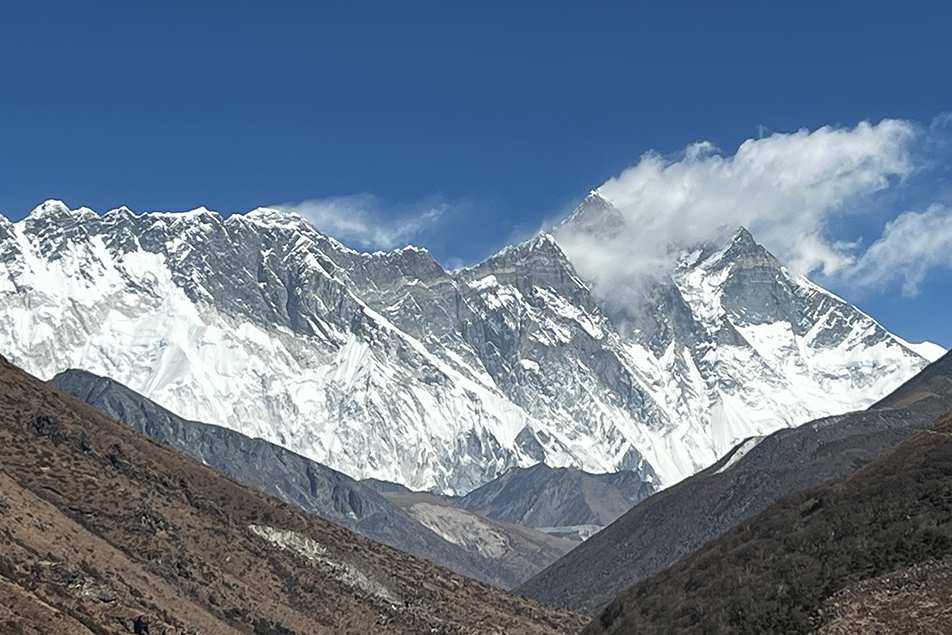
“Completing the journey was a special moment,” Alan said. “There were times I didn’t know if I could do it. I was struggling with altitude at 11 thousand feet and above. To just be able to make it and know that it wasn’t something everybody gets to do and conquer made me feel pretty good. I know that the providers I worked with at Parkview really helped me get back into good health so that I could do something like this and I’m grateful for that.”
For Mary, the takeaways also translate to her work at Parkview. “It makes me appreciate what we have and the healthcare we can provide,” she said. “There are a lot of places where they walk village to village just to see a doctor and get care. I've worked a lot of places and I’ve always been impressed with what Parkview offers. Parkview does a lot to reach out to people who need assistance. For me, physically, knowing I put in so much effort over the past year and feel so much better means I can offer more to my patients.”

